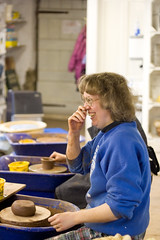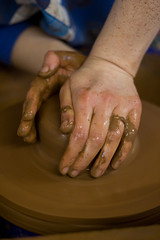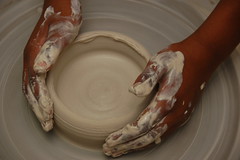
 So I'm on a bit of a thing about productivity in case you hadn't noticed. Its just become so clear to me that it is at the very heart of so many animation student problems. As important as learning the principles of animation is putting them into practice, making a start, moving forward, creating opportunities to make mistakes so that you can learn from them.
So I'm on a bit of a thing about productivity in case you hadn't noticed. Its just become so clear to me that it is at the very heart of so many animation student problems. As important as learning the principles of animation is putting them into practice, making a start, moving forward, creating opportunities to make mistakes so that you can learn from them.
I think a hindrance to this for many is this unreal expectation that you will be able to just start doing great animation from the start, or that you shouldn't start until this is the case. This weird idea is at the heart of many student problems. I've seen students declare their love or hatred for a particular way of making animation (traditional, Flash, 3D etc) after just a few attempts of using it. I can tell you after more than a decade of professional animation in almost every medium that they are all the same in the end. But because the challenge of learning the software means some ugly work my need to be produced until you have a feel for the best way to use the tools students make the most amazing statements like, "I'm only going to make this kind of animation from now on." HA! what a crock. As if you can afford to be that fussy. I'm getting off topic, maybe my thoughts on what kinds of animation are right for you is a subject for another post.
I've been kicking around this simile that I thought might help some people see how making a start is something you just have to do no matter how uncertain you are of your abilities. Pottery!

Ready to throw by icyjumbo
Have you ever had a go at using a potters wheel? If you did high school art you probably have or at least you have seen it done. When I finished high school I applied for and was rejected by the animation courses I applied to, in a desperate attempt to find something creative to do for a year until I could re-apply I ended up enrolled in a ceramics course. It turned out to be good fun, though perhaps not what I wanted to do for a career. When you first sit down at a wheel there is no clay there for you, the wheel is an empty space. its up to you to fill it.
Typically this is done by getting a ball of clay and whacking it down hard on the disk so that it sticks to it well enough. Its not an exact science, you can get better at hitting the middle of the wheel in time, but its never perfectly centered as it has to be before you can really get a refined shape.

Centering by icyjumbo
You have to get the clay wet, spin the wheel fast and push hard on one side of it until it doesn't wobble any more as it goes around. Its called centering. Centering is an essential part of using the wheel, no-one is expected to be able to skip it, even the greatest potters have to start with an off centered lump of clay that then needs to be moulded into a suitable shape. Animation is the same, when I first block out a scene I don't expect it to be perfect, or perhaps we could say centered. I expect to start with something that is out of shape and off balance, then I set about getting it to look how I it needs to be. The more times I do that the faster I can make it happen, just like a master potter can center a piece of clay in seconds when it would take you or me much longer. It might even look like they have it under control from the very outset, but it is undeniable that they have started with an out of shape lump on the wheel, they are just very confident that they can get it how they need and achieve it efficiently.

Pottery Wheel by Scott Ableman
Every animator, no matter how great starts with something close to what they want and then enters into a process of making it look how they planned. That is normal, we don't sit scratching our chin for half an hour and then create a perfectly times string of the best possible poses that flow together without any problems. Just like a potter has to start with that lump of clay they threw down on the wheel, we have to start with our best guess as to what the poses should be. Yes that's right, I said guess. All of us start with a guess, with practice we get better at guessing, but as far as I can tell we never get to a point where we are 100% sure these will be the best poses and that the timing will be perfect. If an experienced animator has so start that way, then how silly is it to sit and do nothing because you expect it of yourself as a student?

Pottery Factory by usr.c
As always I want to stress that I'm not saying that there is no need to plan your animation, I'm talking about when it is time to make the transition from planning to producing. Allow yourself set times for each process, and when it is time to produce, don't procrastinate. Jump in. Whats the worst that can happen? You make a bad piece of animation? So what, I bet I and any other professional animator has made heaps more bad animations than you. Learn from it and start planning your next piece.

1 comment:
Defnitly =) always try new things and learn from your mistakes, its what makes being a student so much fun.
Post a Comment